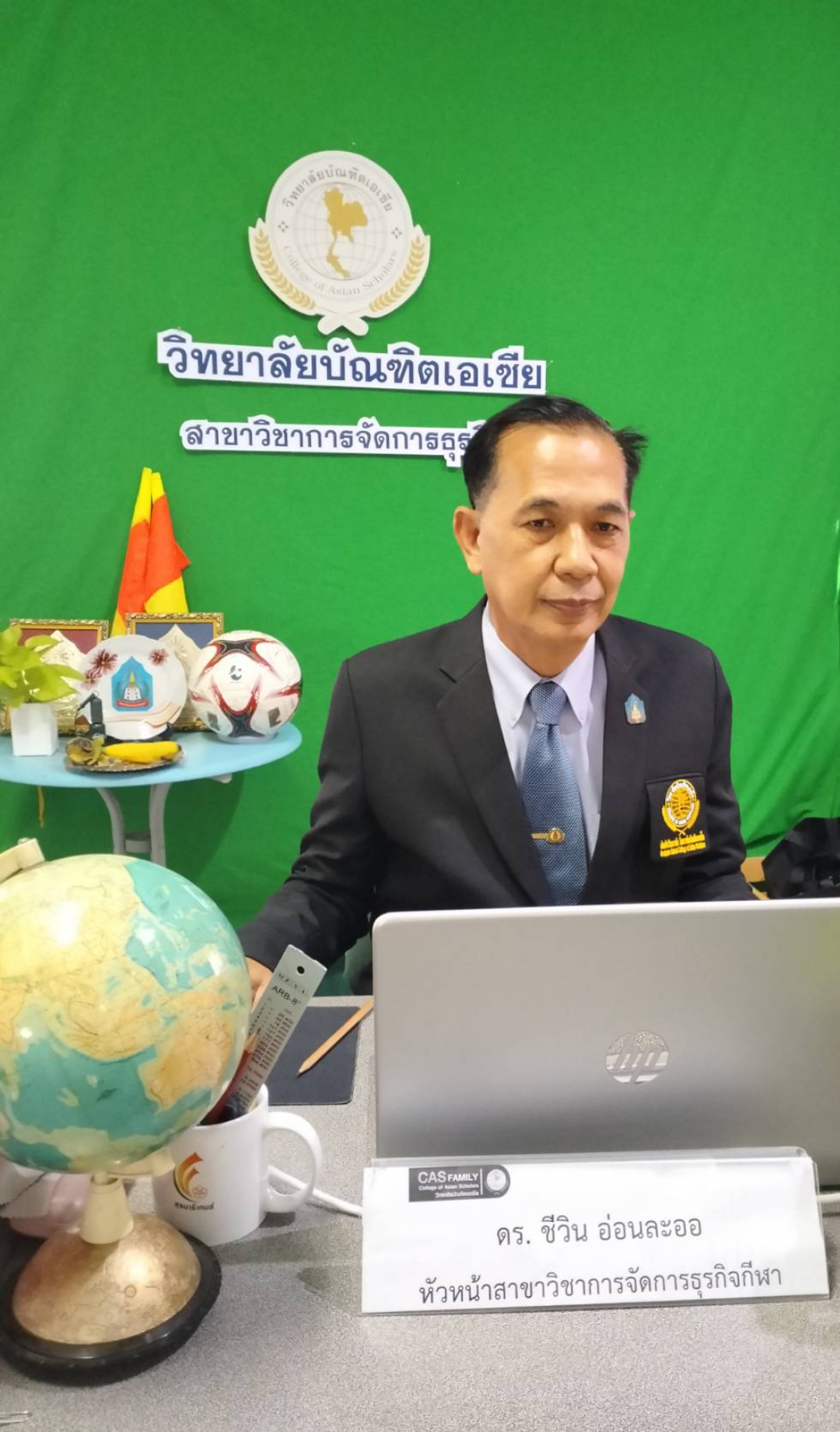ไฟล์ ดาวน์โหลด |
1236263281.pdf |
|||||||||
|
ชื่อผู้วิจัย ชีวิน อ่อนละออ
|
|||||||||
| บทคัดย่อ ภาษาไทย |
การวิจัยครั้งนี้มีวัตถุประสงค์ เพื่อ 1) เพื่อศึกษาสภาพปัจจุบัน และความต้องการ การบริหารแหล่งเรียนรู้แบบมีส่วนร่วม ของชุมชน ในสถานศึกษา สังกัดสำนักงานเขตพื้นที่การศึกษาประถมศึกษาเลย เขต 1 2) เพื่อสร้างแนวทางการบริหารแหล่งเรียนรู้แบบมีส่วนร่วมของชุมชน และ 3) เพื่อนำเสนอแนวทางการบริหารแหล่งเรียนรู้แบบมีส่วนร่วมของชุมชน กลุ่มตัวอย่าง จำนวน 319 คน จำแนกเป็นผู้บริหารสถานศึกษา 35 คน และครูผู้สอน 284 คน โดยการกำหนดขนาดกลุ่มตัวอย่างตามตารางเครจซี่และมอร์แกน (Krejcie & Morgan, 1970) และการสุ่มโดยใช้วิธีการสุ่มตัวอย่างแบบแบ่งชั้น (Stratified random sampling) เครื่องมือที่ใช้ในการเก็บรวบรวมข้อมูล ได้แก่ แบบสอบถาม แบบสัมภาษณ์ และแบบประเมิน สถิติที่ใช้ในการวิเคราะห์ข้อมูล ได้แก่ ร้อยละ ค่าเฉลี่ย และส่วนเบี่ยงเบนมาตรฐาน และการวิเคราะห์ข้อมูลเชิงคุณภาพ โดยวิธีพรรณนาวิเคราะห์ ผลการวิจัยพบว่า 1. สภาพปัจจุบันการบริหารแหล่งเรียนรู้แบบมีส่วนร่วมของชุมชน พบว่า โดยรวมอยู่ในระดับมาก และความต้องการของชุมชนที่จะเข้ามามีส่วนร่วมในการพัฒนาแหล่งเรียนรู้ในสถานศึกษาโดยรวมอยู่ในระดับมาก เป็นไปในทิศทางเดียวกัน จากการวิเคราะห์ผลต่างระหว่างสภาพปัจจุบันกับความต้องการมีส่วนร่วมพัฒนาแหล่งเรียนรู้ มีค่าผลต่างมากอันดับหนึ่ง ได้แก่ความต้องการร่วมนิเทศ กำกับ ติดตาม ประเมินผล การพัฒนาแหล่งเรียนรู้นอกสถานศึกษา ซึ่งชุมชนมีความต้องการที่จะมีส่วนร่วมมากกว่าที่เป็นอยู่ในปัจจุบัน และมีข้อเสนอแนะอยากให้มีการแลกเปลี่ยนเรียนรู้ระหว่างแหล่งเรียนรู้นอกสถานศึกษากับในสถานศึกษา 2. แนวทางการบริหารแหล่งเรียนรู้แบบมีส่วนร่วมของชุมชน ประกอบด้วย หลักการ วัตถุประสงค์ กลไกการดำเนินงาน วิธีการดำเนินงาน ซึ่งมีองค์ประกอบหลัก 2 องค์ประกอบคือ 1) การพัฒนาแบบมีส่วนร่วม 6 ขั้นตอน 2) การดำเนินงานจัดกิจกรรมการพัฒนาแบบมีส่วนร่วม 16 กิจกรรม และ เงื่อนไขความสำเร็จ ผลการประเมินความเหมาะสม ความเป็นไปได้ และความเป็นประโยชน์ ของจากผู้ทรงคุณวุฒิ อยู่ในระดับเหมาะสมมากที่สุด 3. ผลการนำเสนอแนวทาง และแนวปฏิบัติการใช้แนวทางการบริหารแหล่งเรียนรู้แบบมีส่วนร่วมของชุมชนของสถานศึกษา ต่อกลุ่มผู้มีส่วนได้ส่วนเสียในการพัฒนาแหล่งเรียนรู้ ทั้งในสถานศึกษาและนอกสถานศึกษา พบว่ามีความเหมาะสม ความเป็นไปได้ และความเป็นประโยชน์โดยภาพรวมอยู่ในระดับมากที่สุด |
|||||||||
| คำสำคัญ | แนวทางการบริหารแหล่งเรียนรู้; การมีส่วนร่วมของชุมชน | |||||||||
| บทคัดย่อ ภาษาอังกฤษ | The objectives of this research are: 1) to study the current condition and needs Management of Community Participatory Learning Resources 2) to Create a Guidelines of Managing Community Participatory Learning Resources. and 3) to lead Propose a Guidelines for Managing Learning Resources. The Sample Consisted of 319 people, Divided into 35 School Administrators and 284 Teachers. The Sample Size was Determined According to (Krejcie & Morgan, 1970) and Stratified Random Sampling. Data Collection tools Include Questionnaires, Interviews, and Assessments. Statistics used in Data Analysis Include Percentage, Mean, and Standard Deviation. and Qualitative Data Analysis by Descriptive Analysis Method. The research results found that : 1. The Present Condition of the Management of Community Participatory Learning Resources. is Found to be at a High Level Overall. and the Desire of the Community to Participate in the Development of Learning Resources as a Whole is at a High Level. in the Same Direction from the Analysis of the Difference Between the Current Situation and the Need to Participate in the Development of Learning Resources. It has the Largest Difference Value, Number one. Including the Need to Jointly Supervise, Monitor, Evaluate, and Develop Learning Resources Outside of Educational Institutions. The Community Needs to be More Involved than it is today. and there is a Suggestion that there Should be an Exchange of Knowledge Between Learning Resources Outside of the Educational Institution and within the Educational Institution. 2. Guidelines for Managing Community-Participatory Learning Resources, Consisting of Principles, Objectives, and Operating Mechanisms. Method of Operation which has 2 main Components : 1) 6 steps of Participatory Development 2) Implementation of 16 Participatory Development Activities and Conditions for Success Suitability Assessment Results Possibility and Usefulness of Styles from Experts is at the Most Appropriate Level 3. Results of the Presentation of the Guidelines for Using the Community Participatory Learning Resource Management Model of the Educational Institution., to Stakeholder Groups in the Development of Learning Resources. both in Educational Institutions and Outside Educational Institutions Found to be Appropriate Possibility and Overall Usefulness is at the Highest level The objectives of this research are: 1) to study the current condition and needs Management of Community Participatory Learning Resources 2) to Create a Guidelines of Managing Community Participatory Learning Resources. and 3) to lead Propose a Guidelines for Managing Learning Resources. The Sample Consisted of 319 people, Divided into 35 School Administrators and 284 Teachers. The Sample Size was Determined According to (Krejcie & Morgan, 1970) and Stratified Random Sampling. Data Collection tools Include Questionnaires, Interviews, and Assessments. Statistics used in Data Analysis Include Percentage, Mean, and Standard Deviation. and Qualitative Data Analysis by Descriptive Analysis Method.
The research results found that :
1. The Present Condition of the Management of Community Participatory Learning Resources. is Found to be at a High Level Overall. and the Desire of the Community to Participate in the Development of Learning Resources as a Whole is at a High Level. in the Same Direction from the Analysis of the Difference Between the Current Situation and the Need to Participate in the Development of Learning Resources. It has the Largest Difference Value, Number one. Including the Need to Jointly Supervise, Monitor, Evaluate, and Develop Learning Resources Outside of Educational Institutions. The Community Needs to be More Involved than it is today. and there is a Suggestion that there Should be an Exchange of Knowledge Between Learning Resources Outside of the Educational Institution and within the Educational Institution.
2. Guidelines for Managing Community-Participatory Learning Resources, Consisting of Principles, Objectives, and Operating Mechanisms. Method of Operation which has 2 main Components :
1) 6 steps of Participatory Development 2) Implementation of 16 Participatory Development Activities and Conditions for Success Suitability Assessment Results Possibility and Usefulness of Styles from Experts is at the Most Appropriate Level
3. Results of the Presentation of the Guidelines for Using the Community Participatory Learning Resource Management Model of the Educational Institution., to Stakeholder Groups in the Development of Learning Resources. both in Educational Institutions and Outside Educational Institutions Found to be Appropriate Possibility and Overall Usefulness is at the Highest level
|
|||||||||
| Keyword | Guidelines of Management learning resources; Community participation | |||||||||
ชีวิน อ่อนละออ
9 บทความ| ชื่อ - สกุล | วารสาร | ไฟล์ |
หน้า |
|
|---|---|---|---|---|

|
ชีวิน อ่อนละออ CAS314 |
ภาวะผู้นำสำหรับนักบริหารการศึกษา | ||

|
ชีวิน อ่อนละออ CAS906 |
ภาวะผู้นำยุคดิจิทัล สำหรับนักบริหารการศึกษา | ||

|
ชีวิน อ่อนละออ CAS935 |
การศึกษาตลาดธุรกิจการจัดการแข่งขันกีฬา ในจังหวัดขอนแก่น | ||

|
ชีวิน อ่อนละออ CAS949 |
การพัฒนารูปแบบการบริหารจัดการกีฬา ขององค์กรปกครองส่วนท้องถิ่น ในจังหวัดขอนแก่น | ||

|
ชีวิน อ่อนละออ CAS1178 |
แนวทางการพัฒนาภาวะผู้นำเชิงจริยธรรมของผู้บริหารสถานศึกษา สังกัดสำนักงานเขตพื้นที่การศึกษามัธยมศึกษาหนองคาย | ||

|
ชีวิน อ่อนละออ CAS1253 |
การประเมินโครงการ | ||

|
ชีวิน อ่อนละออ CAS1271 |
แนวทางการบริหารจัดการด้านการพัฒนากีฬา สู่ความเป็นเลิศของการกีฬาจังหวัดขอนแก่น | ||

|
ดร.ชีวิน อ่อนละออ |
|||

|
ชีวิน อ่อนละออ CAS1707 |
แนวทางการบริหารแหล่งเรียนรู้แบบมีส่วนร่วมของชุมชน ในสถานศึกษา สังกัดสำนักงานเขตพื้นที่การศึกษาประถมศึกษาเลย เขต 1 |
1.jpg)
1.jpg)
1.jpg)
.1.jpg)